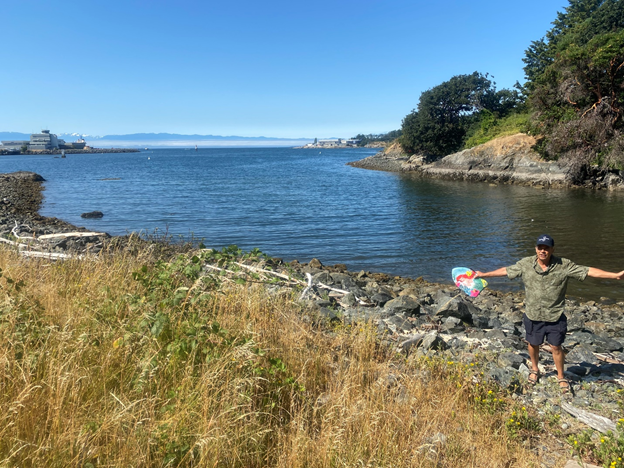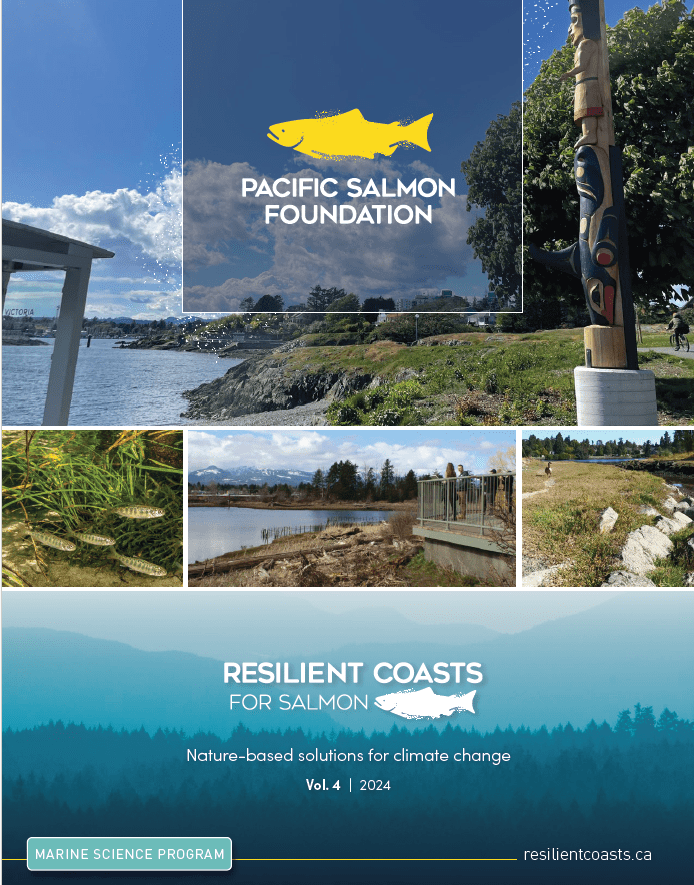Resilient Coasts for Salmon is working with their partner organization, Peninsula Streams and Shorelines, to develop a Green Shores demonstration site at the Songhees Walkway Pocket Beach. Other partners include the City of Victoria, Ralmax Group of Companies, Salish Sea Industrial Services, and the Songhees Nation and Esquimalt Nation.
The demonstration site is located on southeastern Vancouver Island (latitude: 48.427702; longitude: 123.383662) on the north shore of Victoria’s Middle Harbour, approximately 1.5 kilometres west of the city’s core, adjacent to the residential neighbourhood of Victoria West. It is within the traditional territory of the lək̓ʷəŋən (Lekwungen) People, known today as the Songhees Nation and Esquimalt Nation. The area to be restored is just off the Songhees Walkway to the southeast of Lime Bay.

Using a Green Shores® approach, restoration of this pocket beach will help to reclaim the ecological and cultural values of the site, including the restoration of vital nutrient and sedimentary processes which support all five Pacific salmon species found in this area: Chinook, coho, sockeye, chum and pink.

The eroding backshore will be re-graded, stabilized, and planted with native riparian and upland species. Non-native armoured rock and materials will be removed and the beach will be nourished with a sand-gravel mix of small rock pebbles, pea gravel, and sand. These sediments are well suited to provide spawning habitat for surf smelt and potentially for Pacific sand lance forage fish both of which support salmon. The beach nourishment will also help to stabilize the backshore against erosion and prevent coastal squeeze.
Photo credit: Peninsula Streams Society.
In July 2021, members from the Resilient Coasts for Salmon project team, Peninsula Streams Society, and World Wildlife Fund visited the site to view the pre-restoration conditions of the shoreline. Below are some photos from the visit that show the team in action assessing the site.


Once concrete debris and rocks that lined the pocket beach were replaced with sand and gravel, it took merely weeks for local surf smelt to find and start using the restored habitat to spawn! Find out more about it in this article on Chek News.

For additional updates on the progress of the Songhees Pocket Beach site, see this this news post from August 2022 and this newsletter from June 2024, which includes updates from the other Green Shores demonstration sites as well.